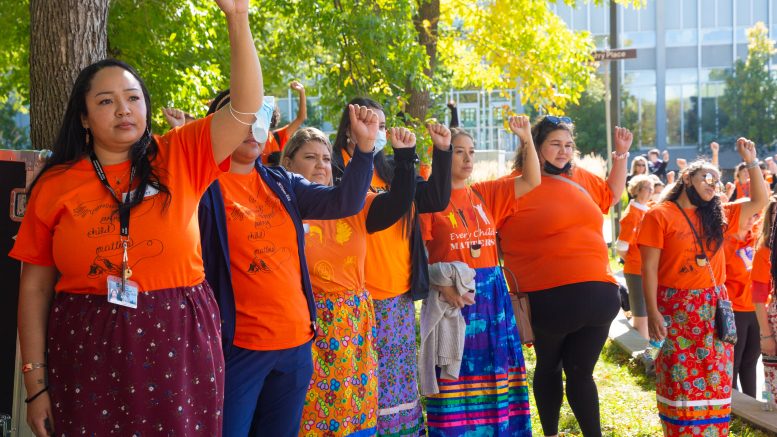Every 30th of September in Canada is set aside as the National Day for Truth and Reconciliation, also known as Orange Shirt Day. This day recognizes the survivors of residential schools, the children who didn’t survive residential schools and the past harms and unjust treatment of Indigenous people in Canada.
The process of reconciliation was made official in Canada in 2008, when the Truth and Reconciliation Commission was launched to not only record the effects of residential schools on Indigenous peoples, but also to permanently establish reconciliation efforts across Canada.
Ribbon skirts act as symbols of identity for Indigenous women, honouring their heritage. Ribbons are sewn onto skirts, and every colour has a special significance to the wearer. They are worn to represent not only themselves, but also causes, like showing awareness of missing and murdered Indigenous women or residential school survivors, so it was only appropriate for these women to don their ribbon skirts on Orange Shirt Day.
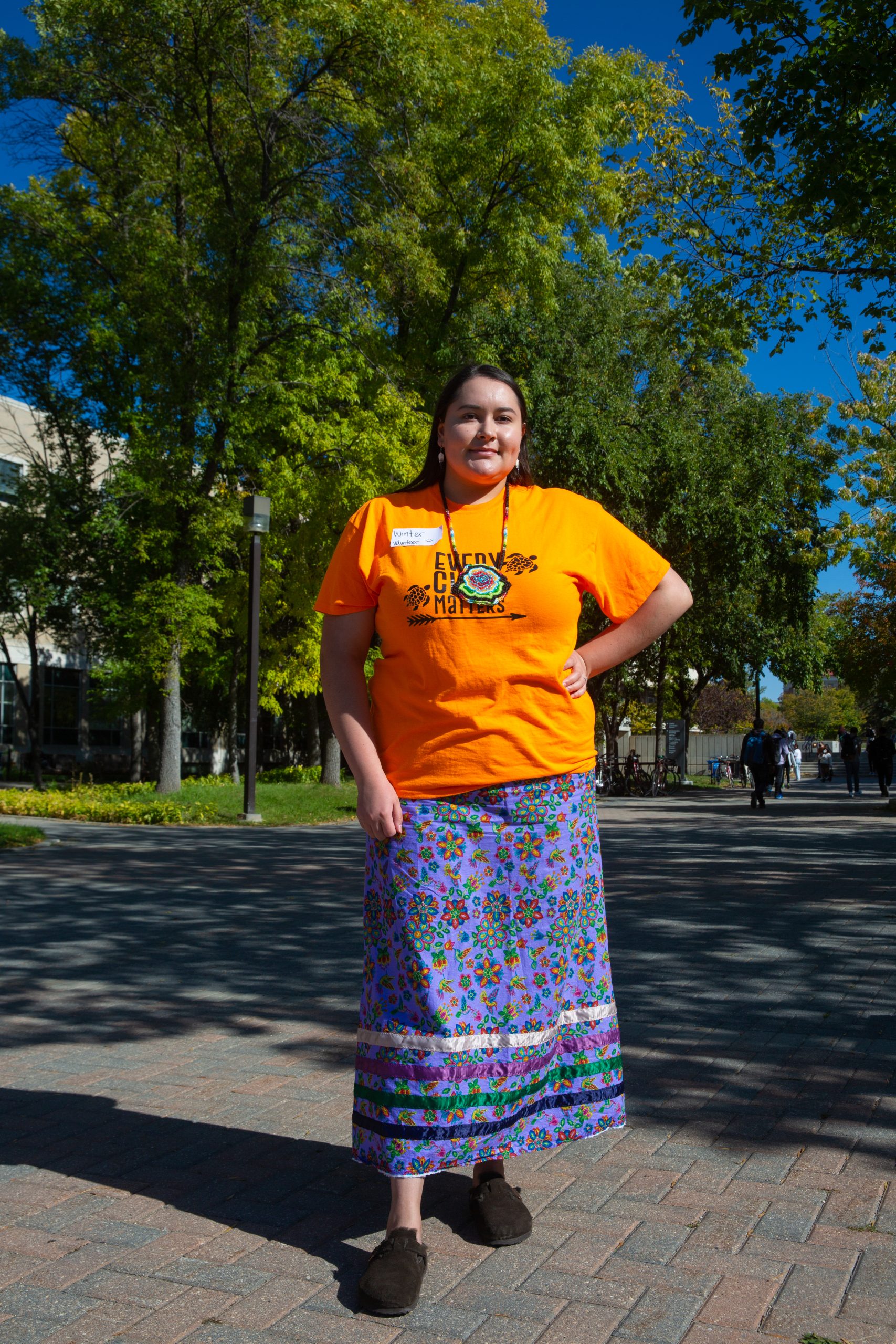
“I’m Anishinaabe from Pinaymootang First Nation with Métis ties.
“Orange Shirt Day is a day of reflecting, learning and healing. I’m proud of the activism and advocacy that is being done by the Indigenous community to ensure that Turtle Island’s truths are being told, but most importantly, are heard. This is a day that brings awareness to the impact of residential schools, and the atrocities that have occurred in Canada’s history, a day that rightfully honours our survivors, the children who attended those harmful institutions and didn’t return home, and the strength they hold in person and in spirit.
“Ribbon skirts connect me to earth and to my culture. To me, ribbon skirts symbolize matriarchal power. My auntie made me the skirt I’m wearing which was brought to fruition with love and good medicine. I wear my skirt with pride.”
— Winter Traverse
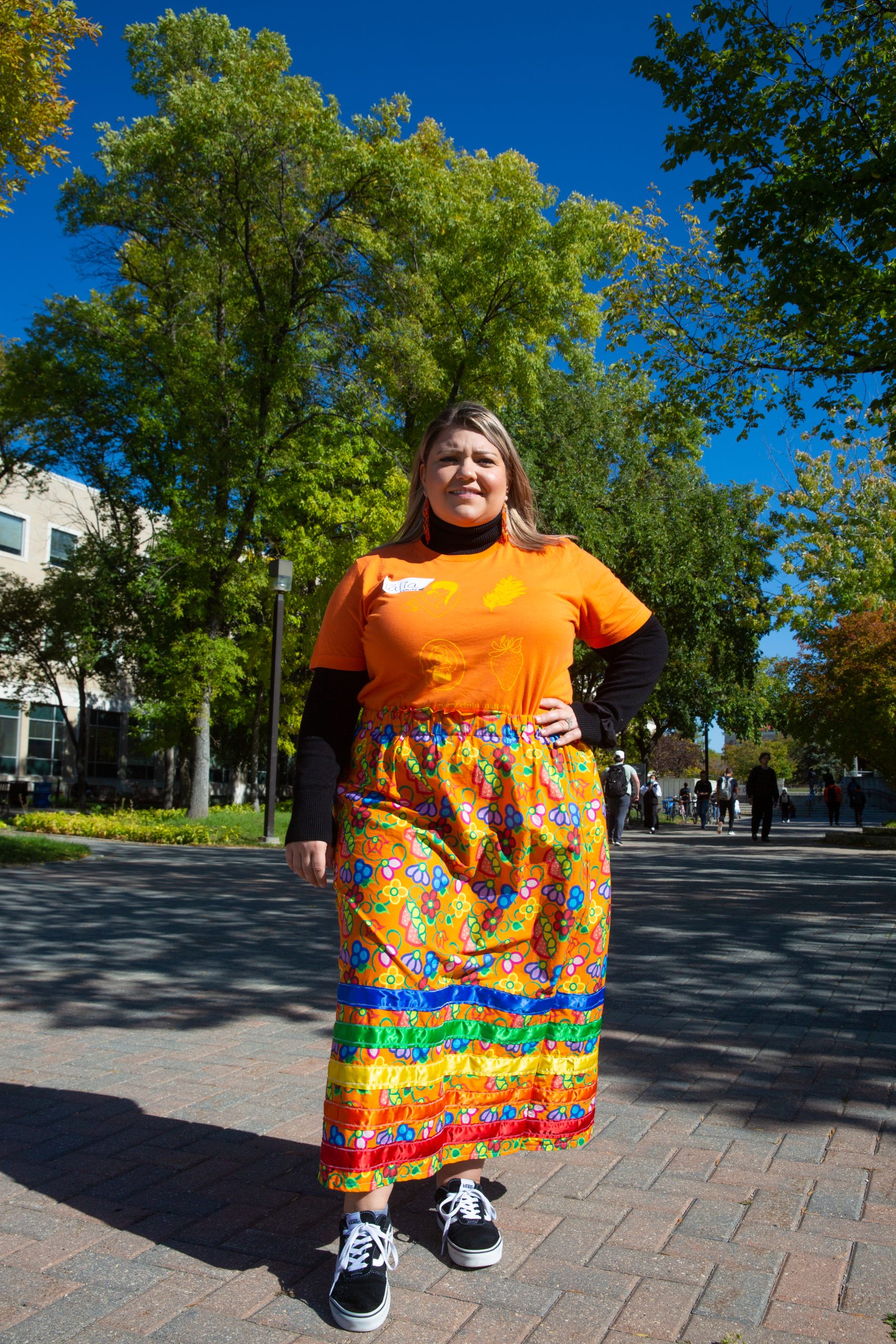
“My grandparents are residential school survivors, and I have lost a lot of my culture through residential schools.
“One of my friends actually helped me make my skirt, and we went through the process of picking fabric and picking ribbons. I don’t have significant colours, I just chose ones that made me really happy.
“I think Orange Shirt Day is remembering the residential school survivors and all the kids who never made it home, and also the trauma that’s been brought, so I wanted to make my skirt bright and colourful to acknowledge the kids, just to try to make them feel bright and happy, even though it isn’t a very happy time.”
—Talia Tumak
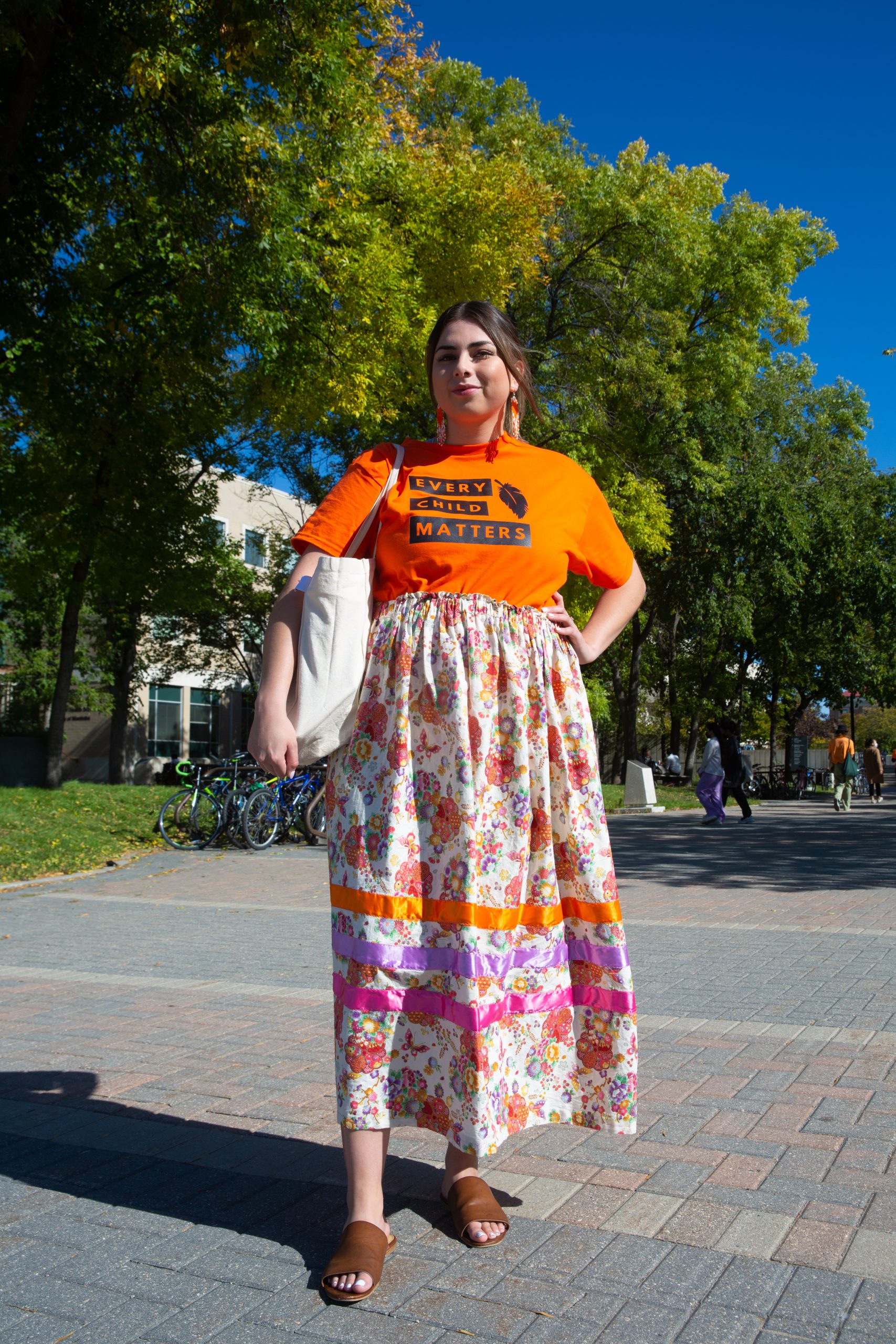
“I wear orange for all of the children who didn’t make it home, for those that feel the lasting effects of residential schools, and for all Indigenous people who continue to face hardships from the legacies of the schools.
“I also wear orange for my nan and papas, who went to the schools and survived.
“Ekosani Kinamaskomitin (Thank you all my relatives).”
—Julie Albert
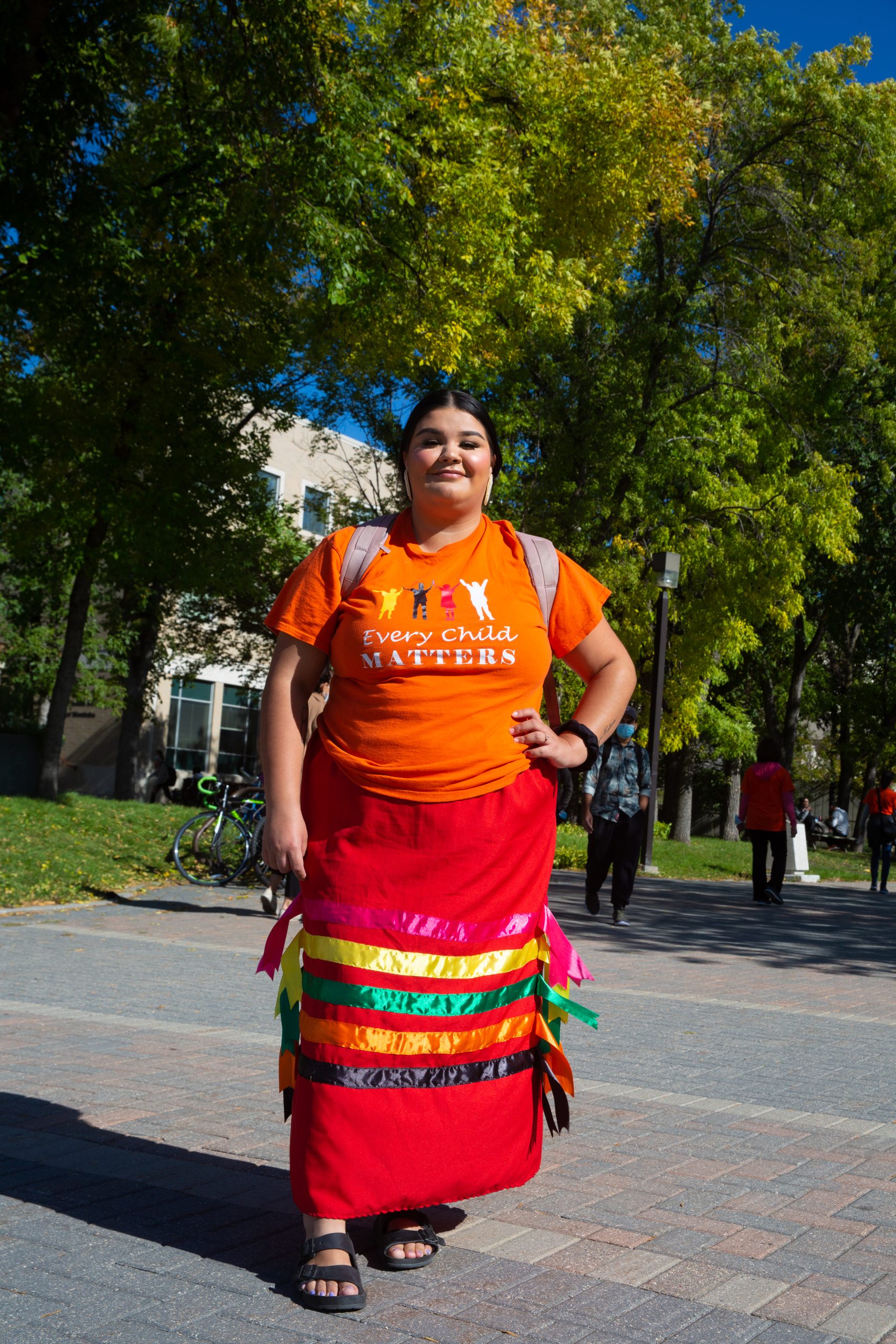
“I am proud to be wearing my ribbon skirt on a day that recognizes my family members and ancestors who attended residential schools.”
—Kiana Tait
